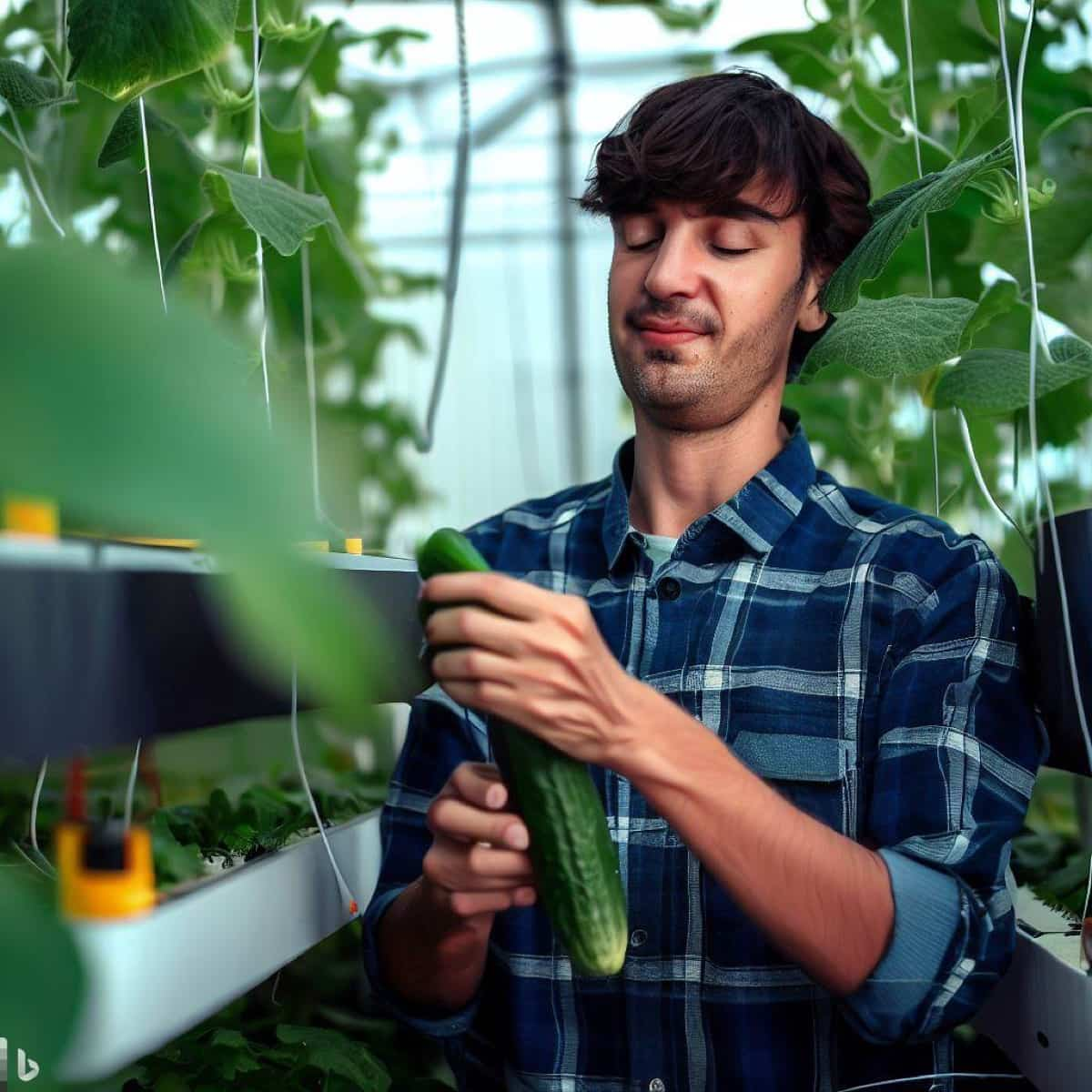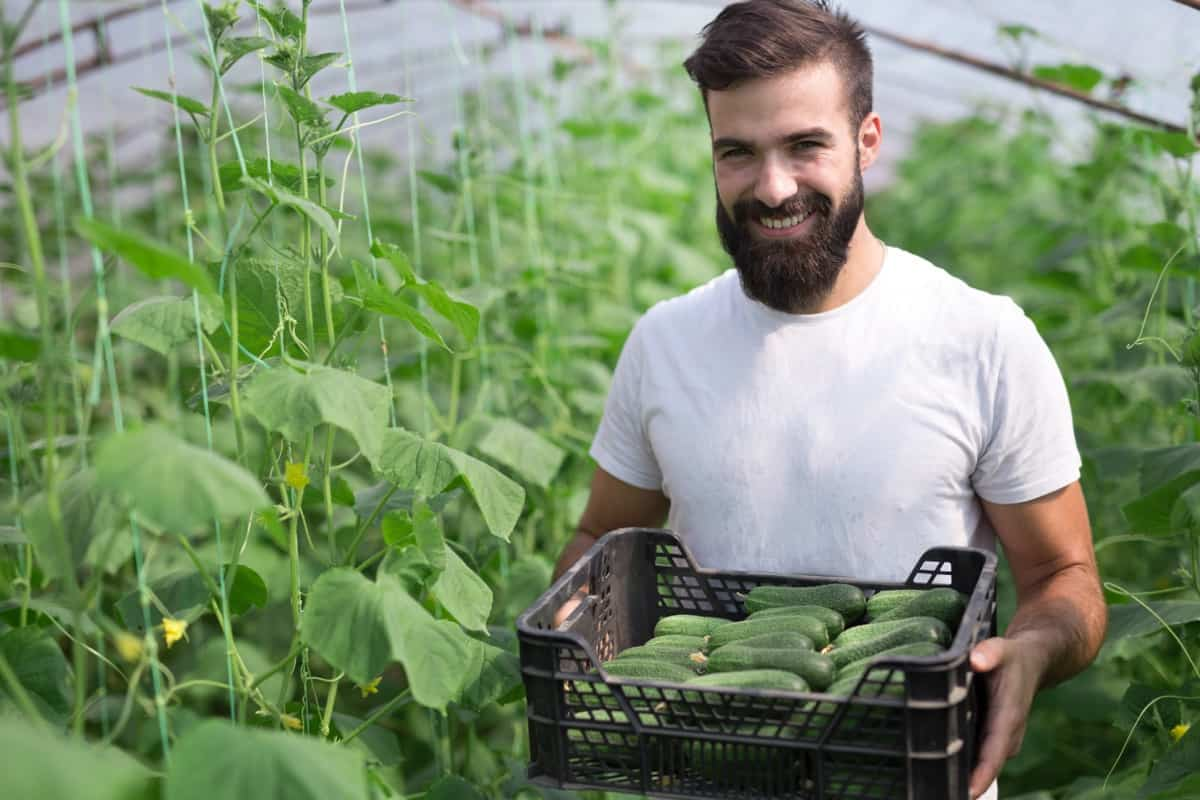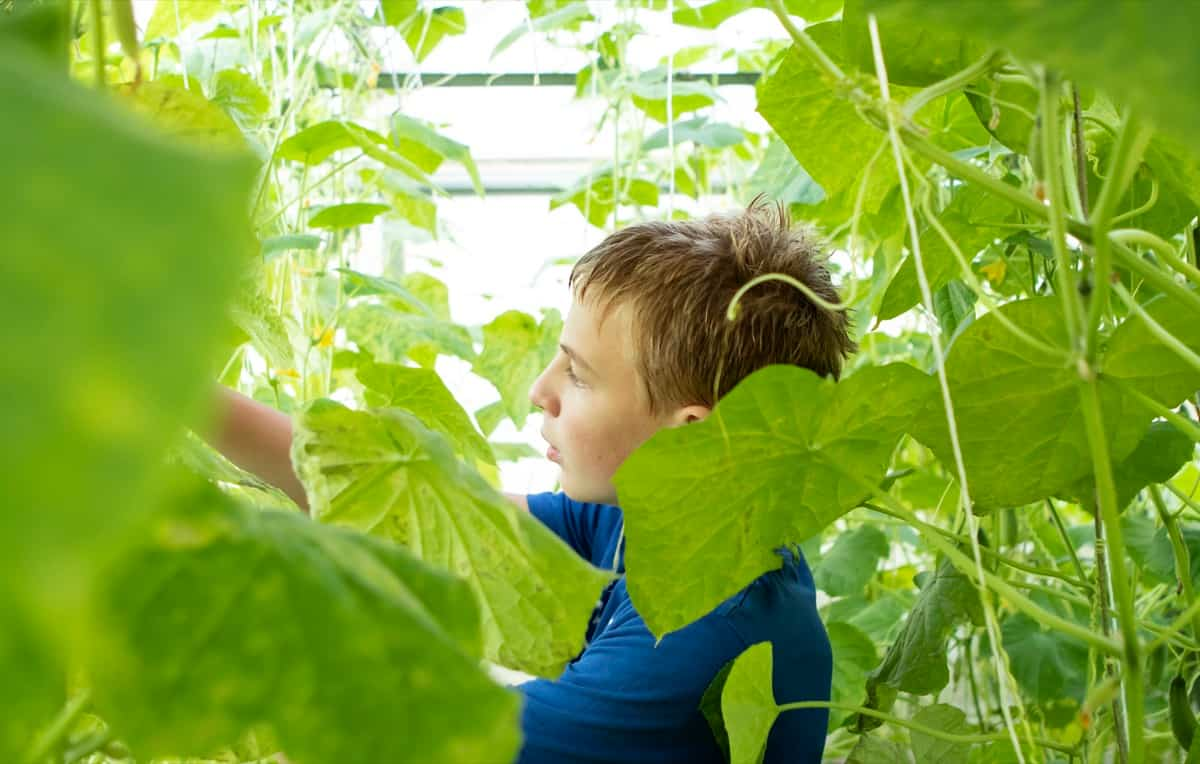Welcome to our step-by-step guide on how to grow hydroponic cucumbers! If you’ve ever dreamed of enjoying fresh, crisp cucumbers year-round, regardless of your outdoor growing conditions, hydroponic cucumber cultivation is the answer. In this blog, we’ll break down the process into easy-to-follow steps, from selecting the right hydroponic system to harvesting your delicious cucumbers.

How to Grow Hydroponic Cucumber
What is Hydroponic Cucumber Cultivation?
Hydroponic cucumber cultivation is a method of growing cucumbers without soil, using nutrient-rich water solutions instead. It’s like giving cucumbers a spa treatment! In this soil-free system, cucumber plants receive all the essential nutrients they need directly through their roots in a controlled environment. Hydroponics offers several benefits, including faster growth, higher yields, and reduced pest problems. Cucumbers love this setup because they get consistent moisture and nutrients.
Choosing the Right Hydroponic System for Cucumbers
When it comes to hydroponic cucumber cultivation, selecting the right hydroponic system is crucial for success. Cucumbers are moisture-loving plants that thrive in warm conditions, making hydroponics an ideal choice. Two primary hydroponic systems, ebb and flow (also known as flood and drain) and DWC (Deep Water Culture), are commonly used. Ebb and flow systems involve cyclic flooding and draining of the root zone, allowing the roots to experience dry periods during the drainage phase.
On the other hand, DWC systems keep the plant’s root system continuously submerged in nutrient-rich water. Both systems have their advantages. Ebb and flow systems are user-friendly and versatile, suitable for various plant types, including cucumbers. DWC systems, with their constant nutrient exposure, can lead to vigorous growth.
Selecting Cucumber Varieties for Hydroponic Growth
When choosing cucumber varieties for hydroponic cultivation, consider their size and purpose. Cucumbers fall into two main categories: slicing and pickling. Slicing cucumbers are long, typically 12 to 13 inches, while pickling cucumbers are shorter, around 6 inches. Within these categories, there are over ten unique cucumber types.
In case you missed it: Growing Burpless Cucumber: Varieties, Origin, Planting, and Care

For hydroponics, bush varieties like apple and lemon cucumbers are excellent choices. Additionally, seedless cucumbers are often recommended for hydroponic systems. You can discover your favorite cucumber type by sampling different flavors and sizes at a local grocery store or market.
Hydroponic Cucumber Growing Conditions
Hydroponic cucumber cultivation is generally less susceptible to diseases and pests than traditional soil-based methods. The most significant concern is powdery mildew, which can be managed by maintaining lower humidity levels in the growing environment. Additionally, it’s crucial to watch for common pests like aphids, thrips, and whiteflies.
These pests can be effectively prevented and controlled using specialized insecticides designed for hydroponic systems, such as those offered by Hydrobuilder. By monitoring and addressing these issues proactively, hydroponic cucumber growers can maintain healthy and productive crops with minimal disease and pest-related challenges.
Hydroponic Nutrient Solutions for Cucumber Plants
Proper nutrient solutions are essential for successful hydroponic cucumber growth. Cucumbers have specific nutritional needs, primarily focusing on nitrogen, potassium, phosphorus, and pH levels. During the vegetative stage, nitrogen-rich nutrient solutions are crucial for promoting healthy stem and leaf development, aiding photosynthesis, and enhancing chlorophyll production.
Nitrogen deficiency can cause yellowing leaves and stunted growth. As cucumbers transition to the flowering and fruiting stage, adjusting the nutrient solution to include more phosphorus and potassium while reducing nitrogen is vital. This shift supports flower formation and cucumber production. Choosing a nutrient solution designed for fruit and vegetable growth ensures cucumbers receive the right nutrients at each growth stage.
Planting Cucumber Seeds or Seedlings Hydroponically
To grow cucumbers hydroponically, start by planting cucumber seeds about ½ inch deep in a growing medium, spacing them 12 inches apart. After germination, thin out weaker seedlings, leaving only the strongest ones. When the weather is warm, transplant these seedlings into your hydroponic garden, ensuring each plant has its dedicated container or garden tray space. Opt for disease-resistant cucumber varieties suitable for hydroponics, like “Salad Bush” or “Bush Champion” for compact systems and “Marketmore” or “Straight Eight” for larger setups.
Hydroponic Cucumber Care: Watering and pH Management
Hydroponic cucumber care requires precise watering and pH management. Maintain a pH level between 5.4 and 6.4 for optimal nutrient uptake. Ensure consistent watering to prevent water stress, but avoid waterlogging by maintaining proper drainage. Regularly monitor pH levels and adjust as needed to support healthy cucumber growth.
In case you missed it: Best Fertilizer for Cucumbers in Pots: Organic, Natural, Homemade, NPK Ratio, When and How to Apply

Pruning and Training Cucumber Vines in Hydroponics
Pruning and training cucumber vines in hydroponics Remove excess foliage and side shoots to improve air circulation and light penetration, reducing the risk of disease. Use trellises or vertical supports to train vines upward, saving space and facilitating better fruit development. Regularly check and adjust the growth pattern to encourage healthier, more productive cucumber plants.
Pests and Disease Management in Hydroponic Cucumber
Hydroponic cucumber growers should be vigilant against pests and diseases. Powdery mildew, a common issue, competes with cucumbers for nutrients, slowing growth. An organic fungicide with sulfur is effective for treatment, along with trimming infected leaves and sanitizing tools. Spider mites attracted to the warm environment, hinder photosynthesis and appear as black spots on leaves.
Miticides and insecticide soaps can help control them. To prevent issues, choose resilient cucumber varieties like Japanese Taurus and maintain proper spacing between plants. Timely action and preventive measures are essential for a healthy hydroponic cucumber crop.
Harvesting and Storing Hydroponically Grown Cucumbers
Harvesting hydroponic cucumbers typically begins when they reach 12-14 inches in length, although pickling cucumbers may be smaller. The skin should be thick and resist penetration by a thumbnail. Most cucumber varieties mature in approximately 50-70 days. To harvest, use scissors or shears to cut the cucumber about a quarter inch above the vine to avoid plant damage. Avoid tugging on the cucumber to ensure a successful and damage-free harvest.
Troubleshooting Common Issues in Hydroponic Cucumber Cultivation
Troubleshooting common issues in hydroponic cucumber cultivation is crucial for a successful harvest. Yellowing leaves may indicate nutrient imbalances or pH problems, requiring nutrient adjustments. Wilting can result from overwatering or poor drainage, so ensure proper watering practices.
Powdery mildew, a common disease, can be controlled with organic fungicides and pruning infected leaves. Spider mites, identifiable by black spots on leaves, can be treated with miticides and insecticide soaps. Prompt action and preventive measures, such as choosing disease-resistant cucumber varieties, are key to addressing and avoiding these issues in your hydroponic cucumber garden.
Tips for Maximizing Yields in Hydroponic Cucumber Farming
Maximizing yields in hydroponic cucumber farming is achievable with a few key tips. First, ensure adequate lighting with LED or HID grow lights to promote healthy growth. Maintain consistent and balanced nutrient solutions, adjusting as plants grow. Implement proper spacing to prevent overcrowding and ensure air circulation. Regularly prune and train vines for efficient space utilization. Monitor and control humidity and temperature for optimal growing conditions. Finally, practice diligent pest and disease management to safeguard your crop.
In case you missed it: 10 Best Heirloom Cucumber Varieties to Grow in Your Garden

Conclusion
Growing hydroponic cucumbers offers a year-round supply of fresh produce. With the right system, nutrient management, and care, you can enjoy bountiful cucumber yields, even in limited space or adverse weather conditions.
- Feed Your Flock for Less: Top 10 Tips to Save on Chicken Feed
- Ultimate Guide to Ossabaw Island Hog: Breeding, Raising, Diet, and Care
- Hatching Answers: The Top 10 Reasons Your Chickens Aren’t Laying Eggs
- Eggs and Economics: Breaking Down the Cost of Raising Backyard Chickens
- Defend Your Greens: Proven Methods to Keep Iguanas Out of Your Garden
- Ultimate Guide to Cinnamon Queen Chicken: A Comprehensive Guide for Beginners
- Ultimate Guide to California Tan Chicken: Breeding, Raising, Diet, Egg-Production and Care
- Ultimate Guide to Marsh Daisy Chicken: Breeding, Raising, Diet, and Care
- 10 Types of Chicken Farming Businesses You Can Start for Profits